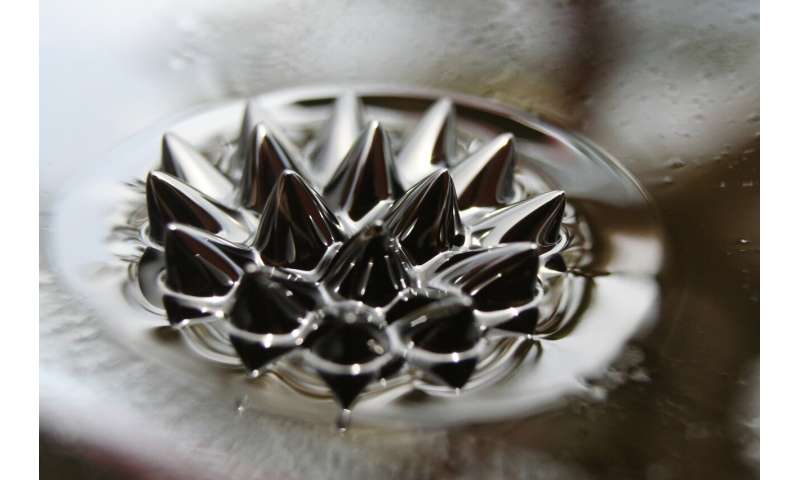Best of Last Week: Printing magnetic drops, tattoos for sensing biomarkers and broken heart syndrome linked to cancer

It was a big week for technology development as a team at the University of Kansas developed a breakthrough material that could lead to cheaper, more widespread solar panels and electronics—an inorganic semiconductor combined with a single layer of molybdenum disulfide. And a team with members from Harvard University, NASA's Jet Propulsion Laboratory and the University of Edinburgh suggested that a silica aerogel could make Mars habitable—or at least parts of it. Also, a team of researchers at the Israel Institute of Technology built a Ramanujan machine that automatically generates conjectures for fundamental constants and are asking interested parties to contribute. And a team at Lawrence Berkeley National Laboratory developed a way to print magnetic liquid droplets—possibly opening the door to a new area of science in magnetic soft materials. Also, a team of electrical engineers at the University of California developed a 'beyond 5G' wireless transceiver that runs at 100-gigahertz—quadruple the speed of the 5G standard.
In other news, a team with members from Florida Atlantic University, the University of Georgia and the University of South Florida found that 30 years of unique data has revealed what's really killing coral reefs—in addition to global warming and ocean acidification, reactive nitrogen is causing phosphorus starvation in the corals. And a team in Germany led by Ali Yetisen with the Technical University of Munich demonstrated dermal tattoo sensors for the detection of blood pH change and metabolite levels—the materials in the tattoos change color in response to biomarkers. A team led by the University of Chicago's Wendy Freedman found that a new Hubble constant measurement adds to the mystery of the universe's expansion rate—they found that the space between galaxies is growing faster than expected. And a team at Lawrence Berkeley National Laboratory announced that they had developed a graphene superconductor that plays more than one tune—it switches from a superconducting material to an insulator and back again.
And finally, if you are one of the millions of people suffering from takotsubo syndrome, in which the heart's main pumping chamber temporarily enlarges due to emotional distress and does not pump well, you might be at even more risk than you thought—an international team of researchers has found that broken heart syndrome can be linked with cancer.
© 2019 Science X Network